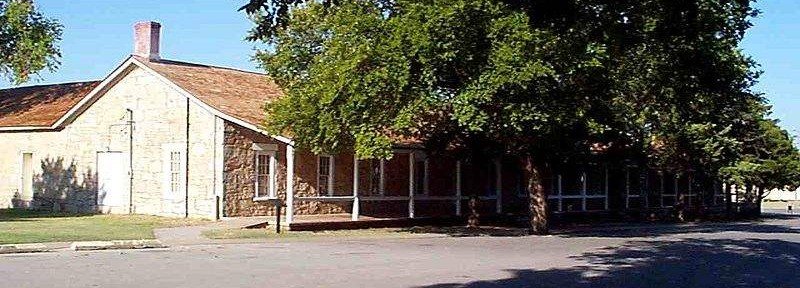Fort Sill Oklahoma is one of the country’s oldest military bases and is also a popular attraction for tourists traveling through southern Oklahoma. Before we give some information to help with your visit there we wanted to highlight some of Fort Sill’s fascinating and long history.
Thank you for reading this post, don't forget to subscribe!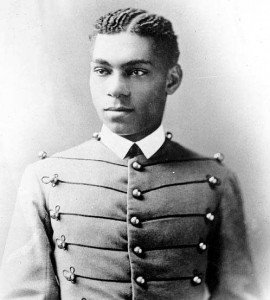
Fort Sill’s Colorful Past
Fort Sill Oklahoma is one of the most unique army installations in the United States. One very significant historical fact about Ft. Sill is that it was the first posting of a 2nd Lieutenant Henry Ossian Flipper who was the first former slave to graduate from West Point. Flipper was assigned to the Buffalo Soldiers in 1877 while they were stationed in Oklahoma. Flipper served the U.S. Army from 1877 to 1882 and also was a civil engineer.
Another fact is that Fort Sill military base is the only fort still in operation today that was built during the southern plains Indian Wars. Fort Sill history therefore is quite extensive and interesting since it’s existence spans the old west frontier days to the present.
The fort was established at the direction of General Philip Sheridan in January of 1869. Sheridan was leading a campaign against the Comanches, southern Cheyennes, Kiowas and in some instances Apaches who were targeting white settlers in the area of western Oklahoma and Texas. The fort was established only one year after the Washita River Battle where George Armstrong Custer had destroyed the village of Black Kettle, killing he and his wife in the process.
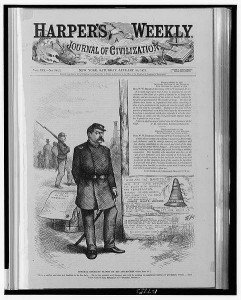
Comanche Resistance
The Comanche unrest was going on for quite a long time. It was a significant part of the plains wars and had been going on as far back as to the early settlement days of Texas in the 1830’s and 1840’s and actually prior to that involving the Spaniards and Mexicans.
Like every other Indian conflict, the cause was the rapid western advancement of white settlements. Army forts as a rule were established along the western line of settlement and history of army action during this time was usually along that line.
In the case of Fort Sill, it was built within Indian Territory. This was the area of Oklahoma where reservations were established. The army’s goal was to resettle the Native Americans within the reservations and away from white settlers. Because of Fort Sill’s location it was very active during the latter part of the 1800’s.
The army outpost was first named Camp Witchita and later took the name of Sheridan’s West Point friend Brigadier General Joshua W. Sill.

The Decisive Red River War
Fort Sill found itself in the spotlight during the 1874 Red River War. A Comanche named Quanah Parker was one of the most successful of the warrior leaders. Parker was actually a half breed Comanche who was the son of a female white captive (Cynthia Ann Parker) taken during a raid in central Texas in 1836. Most of her family was killed during the raid.
Just prior to the Red River War Quanah Parker was leading a war party for a second assault at Adobe Walls located in the Texas Panhandle. The raid wasn’t successful mostly because buffalo hunters were present with their very long range Sharps Bison Rifles.
The story in this instance is that Quanah Parker had his horse shot out from under him at an amazing range of 500 yards. This was enough for the warriors to call off the attack. This attack on Adobe Walls caused the government to reverse their prior peace initiatives and essentially ignited the Red River War.

It should be noted that by the winter of 1873-1874 the Plains Indians were in a lot of trouble. They were having a difficult time even surviving. The reduction of the buffalo herds with the help of the Sharps buffalo rifle decreased the size of the herds to unbelievably low numbers. At the same time the buffalo hunters were decimating the herd and white settlement to the west continued. The Indians were really between a rock and a hard place and total capitulation was just a matter of time.
As a result of the Adobe Walls affair, General Sheridan sent five army columns to the Texas Panhandle. A Red River battle was imminent. Three of the five columns sent were under the command of Colonel Ranald MacKenzie who would go down in history as being one of the most effective army Indian fighters in the southern plains. At one time MacKenzie was commander of Fort Concho in present day San Angelo Texas.
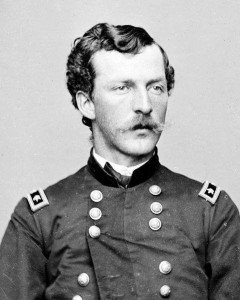
Another column in this expedition was commanded by Colonel Nelson Miles who also went on to be a key figure in the surrender of Geronimo during the Apache Warin what is now southern Arizona. There were more than twenty battle encounters during the campaign with the army being highly aggressive. The cavalry wanted to engage the Indians as many times as it took to win. It was purely an offensive operation and Fort Sill troops took a major part in this campaign.
The campaign was effective against the Indians. The main reason was that the Indians were in no position to engage in a full scale battle. Their supplies were very low or non-existent. They were tired of the running and in most cases fled rather than fought when chased by the cavalry. It was obvious that Sheridan’s troops were better armed than the enemy. Sheridan’s full scale assault plan was probably his best option. It was believed that he too recognized that the Comanches and Cheyennes didn’t have the resources to fight effectively and his massive show of force would conclude things relatively quickly.
The links below are to additional articles from our Trips Into History and Western Trips sites that you may enjoy…
The Buffalo Soldiers of West Texas
Two excellent books on the subject of Fort Sill and it’s long history include Carbine and Lance: The Story of Old Fort Sill by author Wilbur Sturtevant Nye. Also, Lawton-Fort Sill: A Pictorial History by David Stevens.
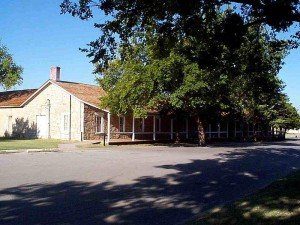
Today’s Fort Sill Oklahoma
Today, Fort Sill army base is an active military installation where the field artillery is joined by the air defense artillery and electronic warfare branches to create the Fires Center of Excellence. The Fort Sill Fires Center of Excellence trains, develops and educated soldiers and leaders.
Fort Sill is a 21st century modern base which has evolved considerably since General Philip Sheridan first chose this location for his base of operations during the southern plains Red River War.
The Fort Sill National Historic Landmark Museum, opened in 1935, is a real glimpse into past army history. It also presents a lot of information about Fort Sill field artillery history. The museum serves both the general public and the military with all aspects of Fort Sill’s historic past. The museum is a depository of artifacts, photographs and documents pertaining to Fort Sill’s colorful past. The museum collection and it’s exhibits are large.
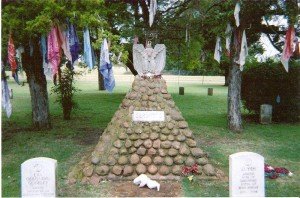
Admission is free and open to the public. Forty-six of the original Fort Sill structures are still in use and in excellent condition. Fort Sill is located in southwest Oklahoma in Comanche county and next to the city of Lawton. It is about 90 miles southwest of Oklahoma City and about 60 miles north of Witchita Falls Texas just west of Interstate-44.
Before you go it’s important to know that Fort Sill is a closed’ post. In order to gain access you must show a valid photo Identification Card (ID). If you are driving into Fort Sill you must show proof of your current driver’s license, state vehicle registration, and proof of insurance. You must register your vehicle on post as soon as possible after you sign in. The registration form is provided to you at the Welcome Center during processing.
Fort Sill can be a fun and educational addition to your trip planner. The exhibits are very interesting and there’s plenty to explore both inside the museum and outside as well.
(Article copyright Trips Into History. Photos and images in the public domain)

